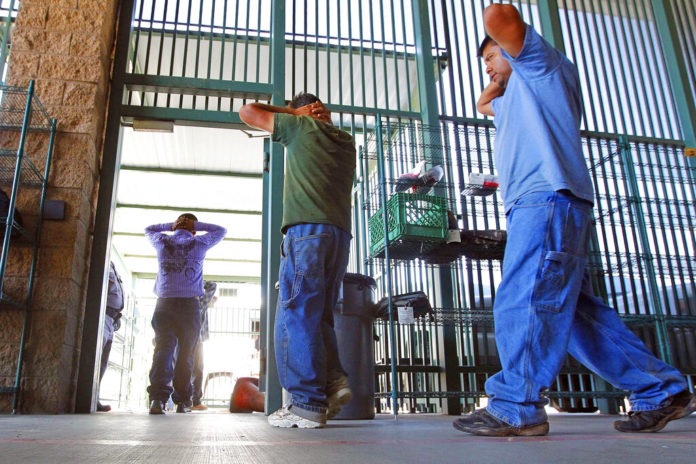
TUCSON, Ariz. (AP) — The trial in a lawsuit alleging unsafe and inhuman detention conditions in several of the Border Patrol’s Arizona stations began Monday in Tucson.
Join our WhatsApp groupSubscribe to our Daily Roundup Email
The lawsuit filed in 2015 applies to eight Border Patrol facilities where attorneys say migrants are for long stretches of time in squalid and freezing cells. A preliminary injunction granted by U.S. District Court Judge David C. Bury in 2016 already requires the Tucson Sector to provide clean mats and thin blankets to migrants held for longer than 12 hours and to allow them to wash or clean themselves.
Although the lawsuit predates last year’s surge in immigrant arrivals, it illustrates some of the challenges posed when migrants are detained, especially if they are children.
The trial began with testimony from a data analyst who explained charts showing how the agency detained people for longer periods of time. Immigrants held in the Tucson Sector spent an average of nearly 54 hours in custody during the fiscal year that ended on Sept. 30.
“What happens with these detainees, how these human beings are affected by those conditions and why, that’s what this case is about,” Bury said.
Nearly 852,000 people — largely families with children — were apprehended last fiscal year. This prompted cries of a crisis at the border from government officials looking to stem the numbers and widespread allegations of subpar conditions in facilities that are designed for short-term stays for adults.
In Arizona, migrants and advocates have long complained about the infamously named “hieleras,” or iceboxes, where those apprehended by the Border Patrol are held before being turned over to another agency or deported.
Photos from 2015 that were evidence in the case show men jammed together under an aluminum blanket and a woman using a concrete floor littered with trash to change a baby’s diaper. Others showed rusty toilets, dirty toilet paper on the floor and a malfunctioning water fountain.
In 2017, Bury said the agency violated court orders by failing to preserve surveillance footage that it was required to turn over. Bury partially granted a motion to hold the Tucson Sector in civil contempt over video files that were irreparably damaged, agreeing the agency knew about the bad files but didn’t notify plaintiffs.
The Border Patrol didn’t respond to a request for comment. It has defended its practices in the past, saying its facilities are designed for short-term stays and that a variety of factors affect how long someone is there.
“The number of individuals in a given hold room is never intended to create discomfort or challenges for those in custody, but rather is determined by operational concerns,” government attorneys wrote in a filing last week “Food, water, sanitation, hygiene items, bedding, medical care, etc., are not withheld as a punitive measure, and station temperatures are not set for punitive purposes.”

America ia a Nanny State. Whats wrong with separating children from mamalas and tatalas? And having them sleep on concrete floors. And putting them in cages surrounded by barbed wire, guards and dogs! As for losing count of them, they can be tatooed.